Maputo is the capital of Mozambique. Known for its harbor and cultural landmarks, the city blends colonial architecture and modern structures.
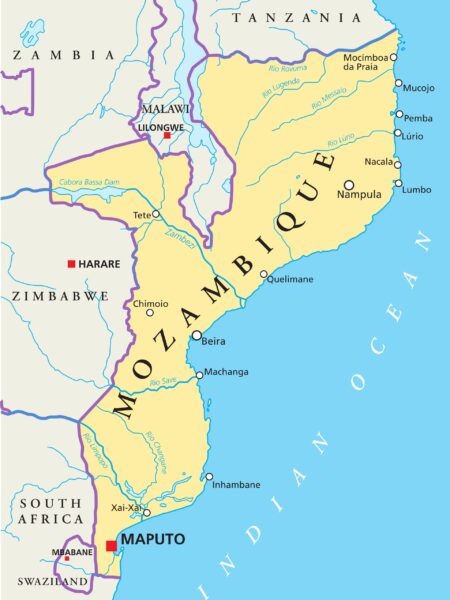
Maputo plays a crucial role in Mozambique’s trade and governance. Its colonial Portuguese architecture, exemplified by historical structures, serves as a backdrop to a dynamically evolving community and offers an eclectic mix of leisure and adventure.
Where is Maputo?
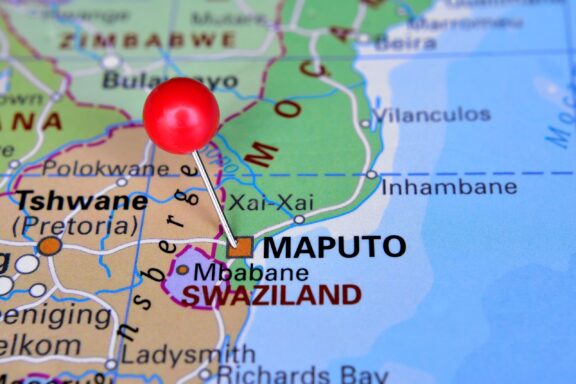
Maputo is located in the southern part of Mozambique, along the southeastern coast of Africa. It is situated near the Indian Ocean, specifically at the mouth of the Espírito Santo Estuary in the Maputo province, the most southern province of Mozambique. The city lies close to the borders with South Africa to the west and Eswatini (formerly Swaziland) to the northwest.
Maputo is approximately 26 degrees east longitude and 26 degrees south latitude. Its proximity to the Indian Ocean influences its climate and makes it accessible via sea routes.
History of Maputo
Before the European influence, the area where Maputo is now located was mainly inhabited by the Tsonga people. These indigenous communities engaged in fishing, agriculture, and regional trade. Though the region had trade connections with neighboring territories, it had yet to become a prominent settlement.
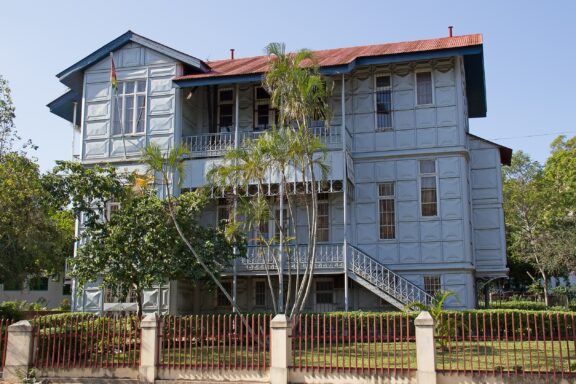
In the 16th century, Portuguese explorer Lourenço Marques reached the area, marking the beginning of European exploration. Subsequently, the Portuguese established trade posts and initiated a more organized form of commerce, interacting with the local tribes for trade in resources like ivory and spices. The city was named Lourenço Marques in honor of the explorer.
During this period, the city started to take its modern shape. Infrastructure like railways connected it to other parts of Mozambique and neighboring countries, facilitating trade.
The colonial authorities focused on making it a robust commercial center. The urban landscape also began to change, featuring a mix of indigenous and Portuguese colonial architecture.
Maputo became a hotbed for anti-colonial sentiments in the 1950s and 1960s. Political activists and revolutionary leaders used the city as a base for their operations against Portuguese rule. Educational and cultural institutions in the city became forums for intellectual resistance.
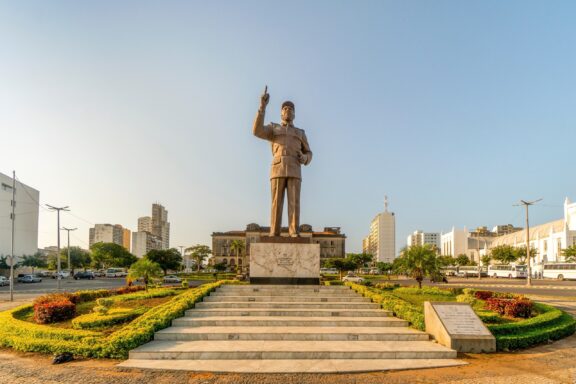
On June 25, 1975, Mozambique gained independence, and soon after, in 1976, the city was renamed Maputo to reflect its indigenous heritage.
After independence, Mozambique plunged into a civil war that lasted until 1992. This period was challenging for Maputo, as the city faced economic decline and political instability.
Resources were scarce, and many public services deteriorated. Despite this, the city remained the administrative and political heart of the country.
Since the end of the civil war, Maputo has embarked on a journey of renewal and growth. Economic reforms have led to investments in technology, tourism, and infrastructure.
Urban development projects have been initiated to modernize the city, and its cultural scene has flourished. Maputo now stands as a city reconciling its complex past with its aspirations for the future.
Features of Maputo
Maputo is a city where the past and present coalesce in a captivating tapestry of experiences. With its geographic blessings, including proximity to pristine beaches and natural reserves, the city offers an eclectic mix of leisure and adventure.
Geography and Climate
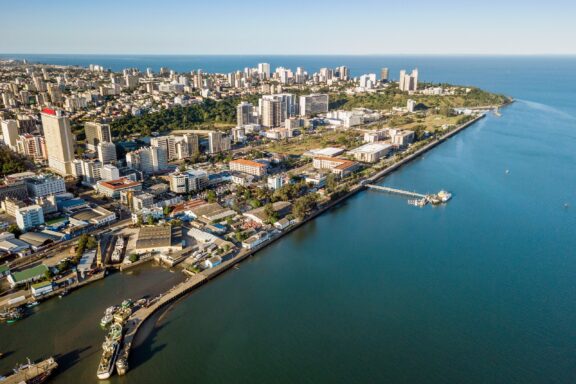
Maputo’s geography is a blend of natural landscapes and urbanized zones. The city is between Maputo Bay to the east and low-lying plains and plateaus to the west. Its subtropical climate makes it susceptible to cyclones and tropical storms, particularly during the rainy season.
Numerous rivers and streams run through or near the city, and several mangroves in the vicinity add another layer to its ecological diversity. Despite being primarily flat, Maputo does feature a few elevations, such as the Polana and Sommerschield hills, which offer panoramic views of the city and the bay.
Population
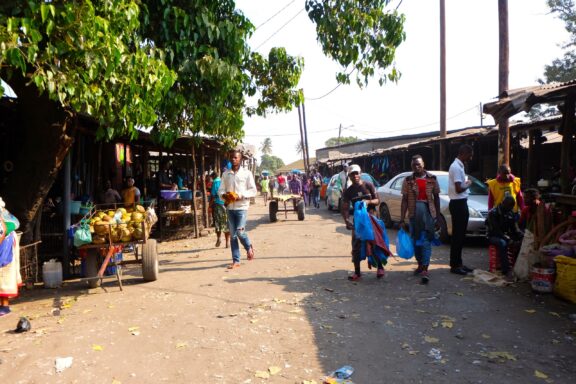
Maputo’s population is around 1.2 million people. The city is ethnically diverse, with a mix of indigenous groups like the Tsonga and people of Portuguese, Indian, and Arab descent.
It’s a youthful city, with a significant portion of the population under 30. Portuguese is the official language, but local languages like Tsonga and Makhuwa are also spoken.
Economy
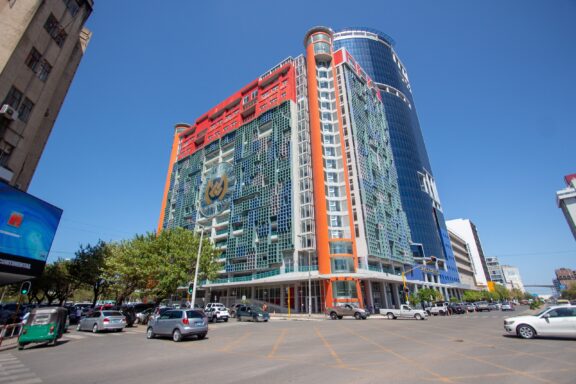
The economic landscape of Maputo is multi-faceted and dynamic. While the port remains a traditional cornerstone, several other sectors are burgeoning. Financial services like banking and insurance have experienced growth bolstered by Mozambique’s economic reforms and investment-friendly policies.
In recent years, real estate development has accelerated, evident in the rise of residential and commercial skyscrapers. Moreover, telecommunications and information technology sectors are also on the upswing, with local startups focusing on solving regional problems like access to clean water and sustainable agriculture.
As for tourism, Maputo has started to gain traction as a destination for eco-tourism, taking advantage of its natural landscapes, particularly its beaches and nearby game reserves.
Things to Do and Places to See in Maputo
A diverse array of activities and sights await you in Maputo. Let’s explore some of the city’s most frequented landmarks and attractions.
1. Maputo Fortress (Fortaleza de Nossa Senhora da Conceição)
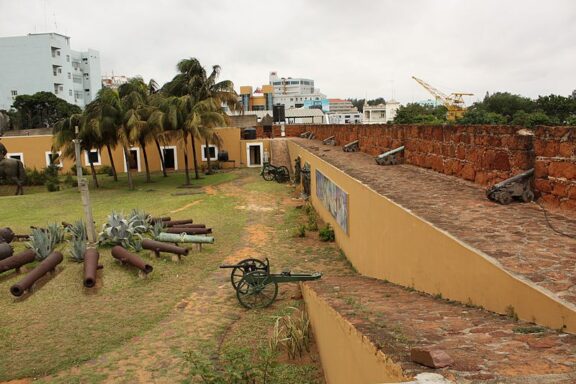
Maputo Fortress, locally known as Fortaleza de Maputo, is a formidable symbol of the city’s tumultuous history. The fortress has weathered the test of time, from its initial construction by the Portuguese to its current status as a key cultural institution in Mozambique.
It’s a must-see landmark for any visitor interested in understanding the city’s complex historical tapestry. Here, you can expect an educational journey through time and explore the fortress’s extensive complex, taking in the displays, art installations, and museum exhibitions that offer deep insights into Mozambique’s history
2. Maputo Railway Station
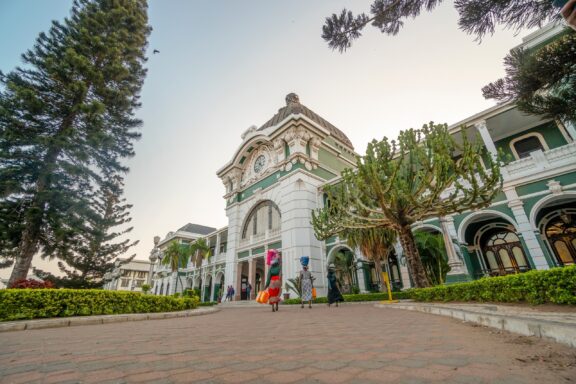
Maputo Railway Station is an architectural masterpiece testament to Mozambique’s colonial past and diverse cultural influences. Recognized as one of the most beautiful railway stations in the world, it has become a significant attraction in its own right.
The station frequently hosts art exhibitions, cultural events, and even live performances, making it a dynamic space alive with activity. Even if you aren’t catching a train, the station is worth visiting for its aesthetic and historical value.
3. Maputo Cathedral (Catedral de Nossa Senhora da Conceição)
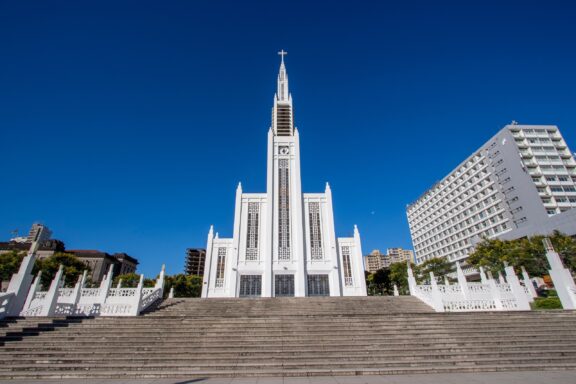
The Cathedral of Our Lady of the Immaculate Conception, commonly known as Maputo Cathedral, serves as a focal point for religious and cultural activities in the city. Its soaring structure and significant history make it an integral part of Maputo’s religious community.
Whether you’re religious or simply interested in architecture and history, Maputo Cathedral offers a tranquil space for contemplation. Regular services are conducted in multiple languages, and visitors are welcome to join.
4. Maputo Special Reserve
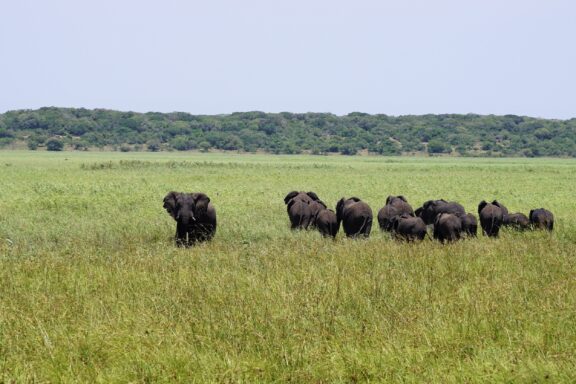
The Maputo Special Reserve, once called the Elephant Reserve, is a critical ecosystem stretching over 1,040 square kilometers. It has become a sanctuary for various other wildlife species and is essential to Mozambique’s conservation efforts.
If you’re an avid nature lover, a trip to the Maputo Special Reserve is an adventure you won’t want to miss. Organized safaris and guided tours are available, offering educational and exciting experiences.
5. Mercado Central
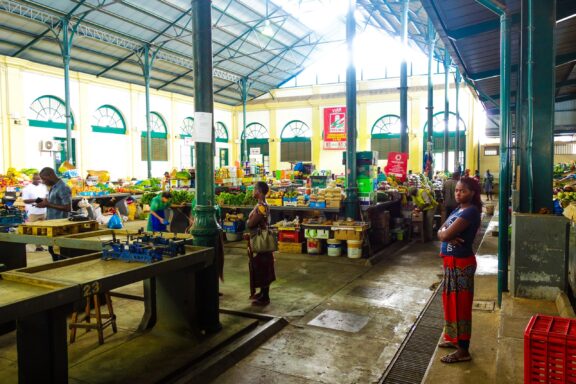
Central Market is the beating heart of Maputo’s commerce and culinary scene. This bustling marketplace is a testament to the city’s diverse influences, from its African roots to its Portuguese colonial past and the vibrant cultures that have shaped it.
Here, you can expect a lively and engaging experience. It’s a fantastic place to practice your haggling skills, sample local foods, or pick a unique souvenir. The market is also a great way to interact with locals and taste everyday life in Maputo.
6. Tunduru Gardens
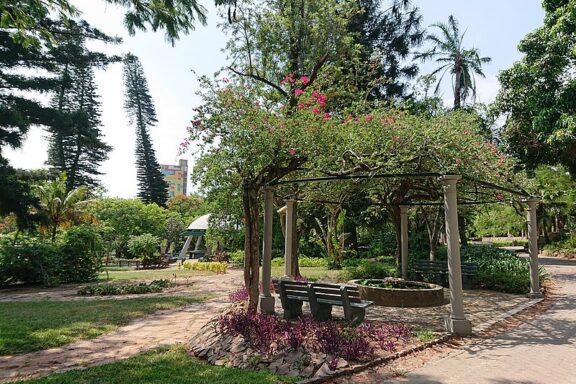
Tunduru Gardens offers an oasis of calm amidst the urban landscape. As one of the oldest public gardens in the city, it serves as a green lung and a favorite local hangout, making it a must-visit for anyone looking to experience a quieter side of Maputo.
Walking through Tunduru Gardens is like stepping into a botanical wonderland. Its lush vegetation includes both native Mozambican flora and exotic plants, laid out with a design aesthetic that borrows from both European and African landscaping traditions.
7. Inhaca Island
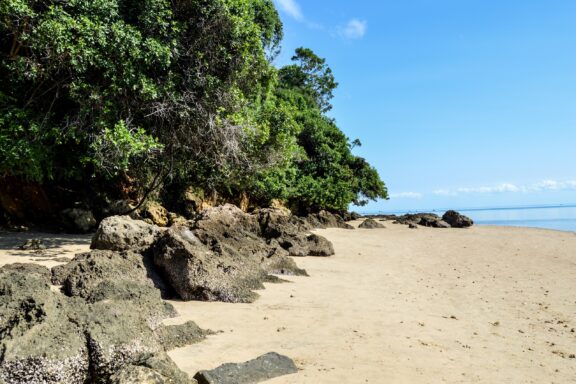
Inhaca Island offers an idyllic setting for relaxation and adventure. Known for its pristine beaches and aquatic life, the island is a paradise for those looking to engage in water sports or soak up some sun.
Whether it’s snorkeling, diving, kayaking, or hiking, Inhaca Island offers a variety of activities for the adventurous at heart. Several eco-tours and guided excursions are available to help you responsibly explore the island’s natural beauty.
8. Mozambique Independence Square
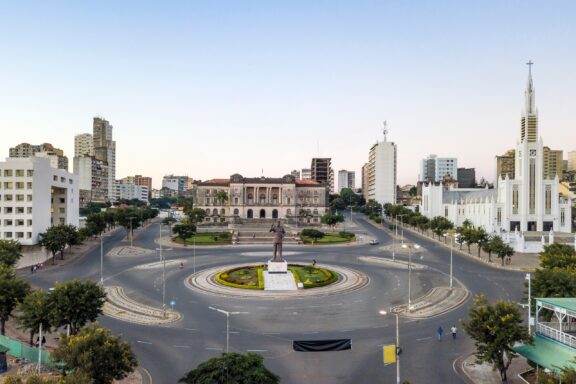
The Independence Square in Maputo is a symbolic public space commemorating Mozambique’s struggle for independence. As a site of historical significance and modern-day events, it is a meeting point for both the past and the present.
Visiting Independence Square gives tourists a sense of the country’s political and social heartbeat. The square often hosts national celebrations, protests, and other significant events. It’s a site that offers both an education in Mozambican history and a finger on the pulse of its contemporary social and political landscape.
Frequently Asked Questions
What is the best time to visit Maputo?
The ideal time to visit Maputo is from May to October when the weather is dry and mild.
How safe is Maputo for tourists?
Maputo is relatively safe compared to its neighboring countries, and most visits to Mozambique go without any significant issues. However, tourists should exercise caution due to the prevalence of street crime, which can sometimes involve knives and firearms.
Additionally, while Maputo itself may offer a level of safety, the roads leading out of the city are often poorly lit and lack proper maintenance and signage. It’s advisable to take standard safety precautions and remain vigilant, especially in less frequented areas and during nighttime.
What is the traditional cuisine like, and what are must-try dishes?
Traditional Cuisine: Maputo’s cuisine combines indigenous flavors and Portuguese influences. Seafood is prominent; staple ingredients include corn, cassava, and rice. Here are some of the top dishes to try while in Maput:
1. Galinha à Zambeziana (Chicken Zambeziana)
2. Matapa
3. Frango Grelhado (Grilled Chicken)
4. Bolo Polana
Are there any beaches near Maputo?
Yes, Costa do Sol and Catembe are popular beaches a short drive from the city center.
Are there any specific cultural norms or etiquettes I should be aware of?
It’s polite to greet people before initiating a conversation. Casual attire is acceptable in most settings, but some religious sites may require modest clothing.
Is Maputo family-friendly?
Yes, Maputo is family-friendly. Activities for children include visiting the Natural History Museum, beaches, and various parks.
What kind of shopping experiences does Maputo offer?
Maputo offers a variety of shopping experiences, from upscale malls to traditional markets like Mercado Central and FEIMA Craft Fair.
How is the healthcare system in Maputo, and what should I do in a medical emergency?
Healthcare facilities are adequate but may not meet Western standards. For serious medical emergencies, seeking treatment in a private hospital is advisable.
Final Thoughts
Maputo is a city that beautifully marries history, culture, and natural beauty. From its Portuguese colonial architecture to its diverse culinary offerings and vibrant markets, the city offers a rich tapestry of experiences.
Whether you’re interested in art, history, wildlife, or just soaking up the local atmosphere, Maputo has something to offer for every kind of traveler. Its growing economy and increasing tourist infrastructure make it more accessible and enjoyable than ever.
Image Sources and Copyright Information
- Map of Mozambique: © Peter Hermes Furian/Shutterstock
- Maputo Location Marked on Map: © JoaoCachapa/Shutterstock
- Iron House in Maputo: © Fedor Selivanov/Shutterstock
- Statue of Samora Machel in Maputo: © Sopotnicki/Shutterstock
- Aerial View of Coastal Cityscape: © Sopotnicki/Shutterstock
- Bustling Market Scene in Maputo: © nooaonphoto/Shutterstock
- Downtown Maputo with Modern Buildings and Traffic: © Ivan Bruno de M/Shutterstock
- Fortress with Cannons and Palm Trees: © lucianf/Wikimedia | CC BY 2.0 Generic
- Maputo Railway Station Facade: © Sopotnicki/Shutterstock
- Maputo Cathedral Exterior View: © Ivan Bruno de M/Shutterstock
- Herd of Buffaloes in Grassland: © Liudmila BF/Shutterstock
- Indoor Market Scene in Maputo: © Tonis Valing/Shutterstock
- Pergola and Benches in a Lush Garden: © Claus Wonnemann/Wikimedia | CC BY-SA 4.0 International
- Tropical Beach with Rocks and Trees: © Shams F Amir/Shutterstock
- Aerial View of a City Square with Monument and Buildings at Dusk: © Sopotnicki/Shutterstock